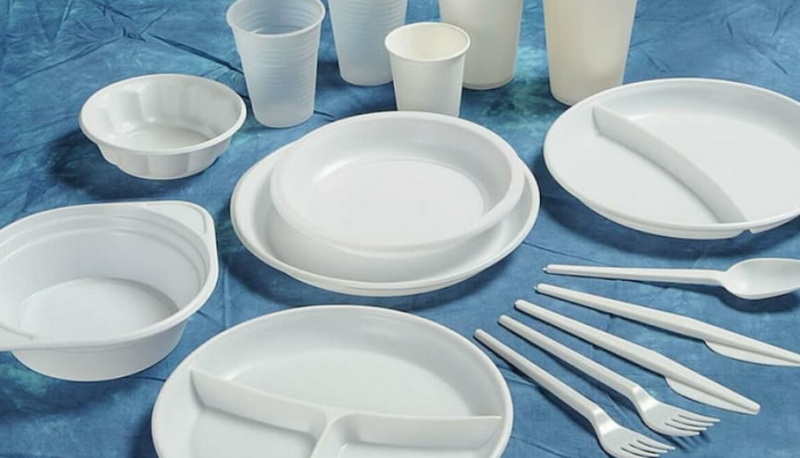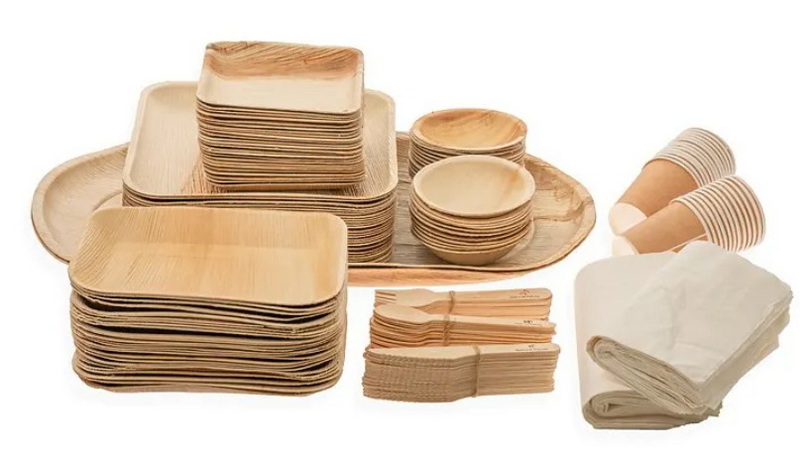
Content Menu
● Introduction to Wholesale Disposable Plates and Cutlery
>> Advantages of Wholesale Disposable Plates and Cutlery
>> Disadvantages of Wholesale Disposable Plates and Cutlery
● Strategies for Saving Money on Wholesale Disposable Plates and Cutlery
>> 1. Bulk Purchasing
>> 2. Choosing the Right Supplier
>> 3. Opting for Eco-Friendly Options
>> 4. Limiting Use to Necessary Situations
>> 5. Negotiating with Suppliers
● Case Studies: Successful Implementation of Wholesale Disposable Plates and Cutlery
>> Small Restaurants in Hong Kong
>> Event Planning
● Choosing the Right Wholesale Disposable Plates and Cutlery
● Market Trends and Future Outlook
● Best Practices for Inventory Management
● Conclusion
● Frequently Asked Questions
>> 1. What are the primary advantages of using wholesale disposable plates and cutlery?
>> 2. How can I choose the right supplier for wholesale disposable plates and cutlery?
>> 3. Are eco-friendly disposable plates and cutlery more expensive than traditional options?
>> 4. In what situations is it most cost-effective to use wholesale disposable plates and cutlery?
>> 5. How can businesses balance cost savings with environmental concerns when using wholesale disposable plates and cutlery?
In today's fast-paced world, businesses and individuals alike are constantly seeking ways to reduce costs without compromising on quality or efficiency. One area where significant savings can be achieved is in the procurement of wholesale disposable plates and cutlery. This article will delve into the strategies for saving money on these essential items, exploring their benefits, drawbacks, and how they can be effectively integrated into various settings.

Introduction to Wholesale Disposable Plates and Cutlery
Wholesale disposable plates and cutlery offer a convenient and often cost-effective solution for events, restaurants, and households. They eliminate the need for washing and maintenance, which can be particularly advantageous in high-volume settings like restaurants or during large gatherings.
Advantages of Wholesale Disposable Plates and Cutlery
1. Reduced Cleaning and Maintenance Costs: By using disposable items, businesses can significantly cut down on water, electricity, and labor costs associated with washing and maintaining traditional tableware.
2. Improved Operational Efficiency: Disposable tableware speeds up service and cleanup, allowing for faster table turnover rates, especially during peak periods.
3. Enhanced Hygiene: Disposable items reduce the risk of cross-contamination, providing a safer dining experience for customers.
4. Flexibility in Inventory Management: Wholesale purchasing allows businesses to easily adjust their stock levels based on demand fluctuations.
Disadvantages of Wholesale Disposable Plates and Cutlery
1. Environmental Impact: The use of disposable items contributes to waste and pollution, which is a significant concern for environmentally conscious consumers.
2. Higher Long-Term Costs: While initially inexpensive, frequent use of disposables can lead to higher long-term expenses compared to traditional tableware.
Strategies for Saving Money on Wholesale Disposable Plates and Cutlery
1. Bulk Purchasing
Buying wholesale disposable plates and cutlery in bulk is one of the most effective ways to save money. Suppliers often offer discounts for larger orders, which can significantly reduce the cost per unit. It's essential to have a clear understanding of your usage needs to avoid overstocking, which can lead to unnecessary storage costs.
2. Choosing the Right Supplier
Selecting a supplier that offers competitive pricing without compromising on quality is crucial. Consider factors like product variety, eco-friendliness, and supply stability when choosing a supplier. A reliable supplier can ensure consistent delivery times and maintain product quality, which is vital for maintaining customer satisfaction.
3. Opting for Eco-Friendly Options
While traditional disposable items are cheaper, opting for eco-friendly or biodegradable options can enhance customer satisfaction and contribute to a more sustainable business model. These options may be slightly more expensive but can offer long-term benefits in terms of brand reputation and compliance with environmental regulations.
4. Limiting Use to Necessary Situations
Disposable items should ideally be used in situations where traditional tableware is impractical, such as large events or outdoor gatherings. For everyday use, traditional crockery remains more cost-effective. By limiting the use of disposables, businesses can reduce waste and maintain a balance between convenience and sustainability.
5. Negotiating with Suppliers
Building a strong relationship with suppliers can lead to better negotiation opportunities. Regular customers may be able to secure discounts or special deals, especially if they are purchasing in large quantities.

Case Studies: Successful Implementation of Wholesale Disposable Plates and Cutlery
Small Restaurants in Hong Kong
In Hong Kong, small restaurants have successfully implemented wholesale disposable plates and cutlery to reduce operational costs and enhance efficiency. By leveraging the advantages of disposables, these businesses have managed to maintain profitability in a competitive market. For instance, during peak hours or special events, using disposable items allows them to serve more customers without increasing labor costs.
Event Planning
Event planners often rely on wholesale disposable plates and cutlery for large gatherings. This not only simplifies cleanup but also ensures that events run smoothly without the hassle of washing dishes. Additionally, using disposables allows for quick setup and teardown, which is crucial for events with tight timelines.
Choosing the Right Wholesale Disposable Plates and Cutlery
To better understand the variety of options available, here is a detailed guide to some common types of wholesale disposable plates and cutlery:
- Plastic Plates: Durable and versatile, suitable for both hot and cold foods. They are widely available and often the cheapest option.
- Paper Plates: Lightweight and inexpensive, ideal for casual gatherings. They are biodegradable and can be composted, making them a more eco-friendly choice.
- Biodegradable Plates: Made from natural materials like bamboo or sugarcane, these are a more sustainable option. They are compostable and reduce environmental impact.
- Disposable Cutlery: Available in plastic, wood, or bioplastic, suitable for various events. Wooden cutlery is a popular eco-friendly alternative to traditional plastic.
Market Trends and Future Outlook
The market for wholesale disposable plates and cutlery is evolving rapidly, driven by consumer demand for sustainable products. As governments implement stricter environmental regulations, businesses are shifting towards eco-friendly options. This trend is expected to continue, with biodegradable and compostable materials becoming increasingly popular.
Best Practices for Inventory Management
Effective inventory management is crucial when purchasing wholesale disposable plates and cutlery. Here are some best practices:
1. Monitor Usage Patterns: Keep track of how quickly you use disposable items to avoid overstocking or running out of stock.
2. Store Properly: Ensure that disposable items are stored in a dry, clean environment to maintain their quality.
3. Rotate Stock: Regularly rotate stock to ensure that older items are used before they expire or become obsolete.
Conclusion
Saving money on wholesale disposable plates and cutlery involves a combination of strategic purchasing, supplier selection, and mindful usage. While disposables offer convenience and efficiency, they should be used judiciously to balance cost savings with environmental responsibility. By adopting eco-friendly options and optimizing inventory management, businesses can maintain profitability while contributing to a more sustainable future.

Frequently Asked Questions
1. What are the primary advantages of using wholesale disposable plates and cutlery?
The primary advantages include reduced cleaning and maintenance costs, improved operational efficiency, enhanced hygiene, and flexibility in inventory management.
2. How can I choose the right supplier for wholesale disposable plates and cutlery?
When choosing a supplier, consider factors such as price competitiveness, product quality and variety, and supply stability. It's also important to compare quotes from multiple suppliers.
3. Are eco-friendly disposable plates and cutlery more expensive than traditional options?
Yes, eco-friendly options are often slightly more expensive than traditional disposable items. However, they offer long-term benefits in terms of sustainability and brand reputation.
4. In what situations is it most cost-effective to use wholesale disposable plates and cutlery?
Disposable items are most cost-effective in situations where traditional tableware is impractical, such as large events or outdoor gatherings. For everyday use, traditional crockery remains more cost-effective.
5. How can businesses balance cost savings with environmental concerns when using wholesale disposable plates and cutlery?
Businesses can balance cost savings with environmental concerns by limiting the use of disposables to necessary situations and opting for eco-friendly or biodegradable options when possible.

















